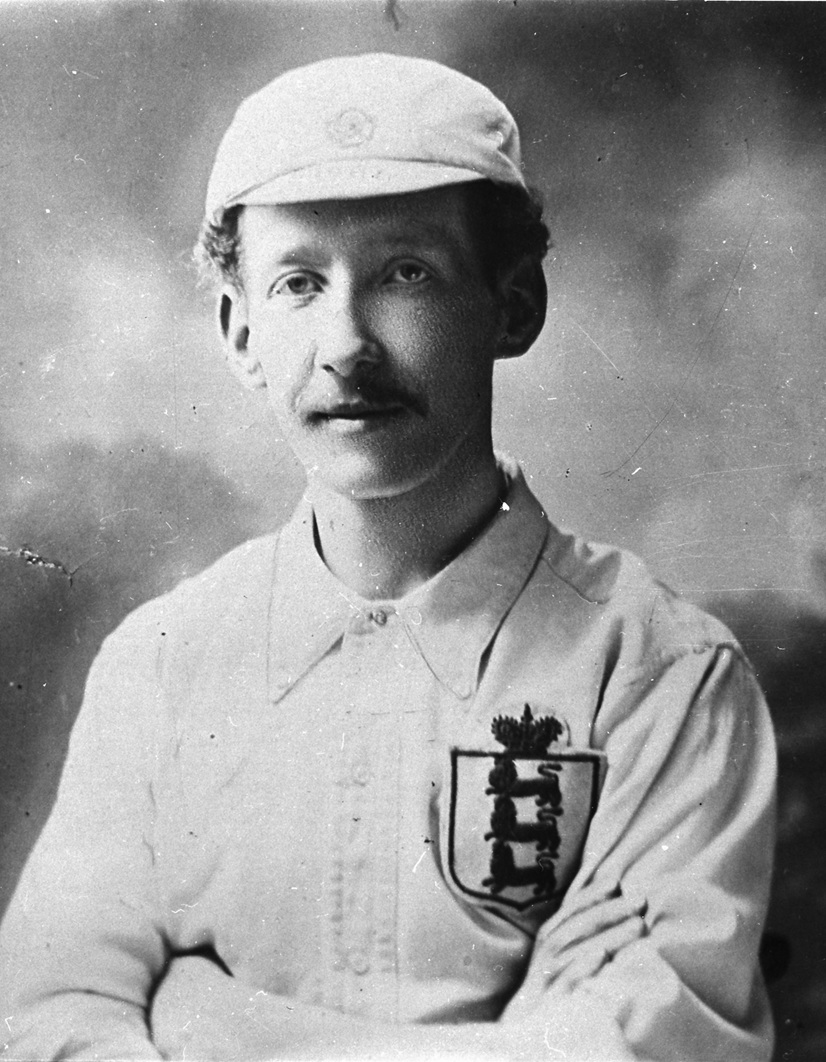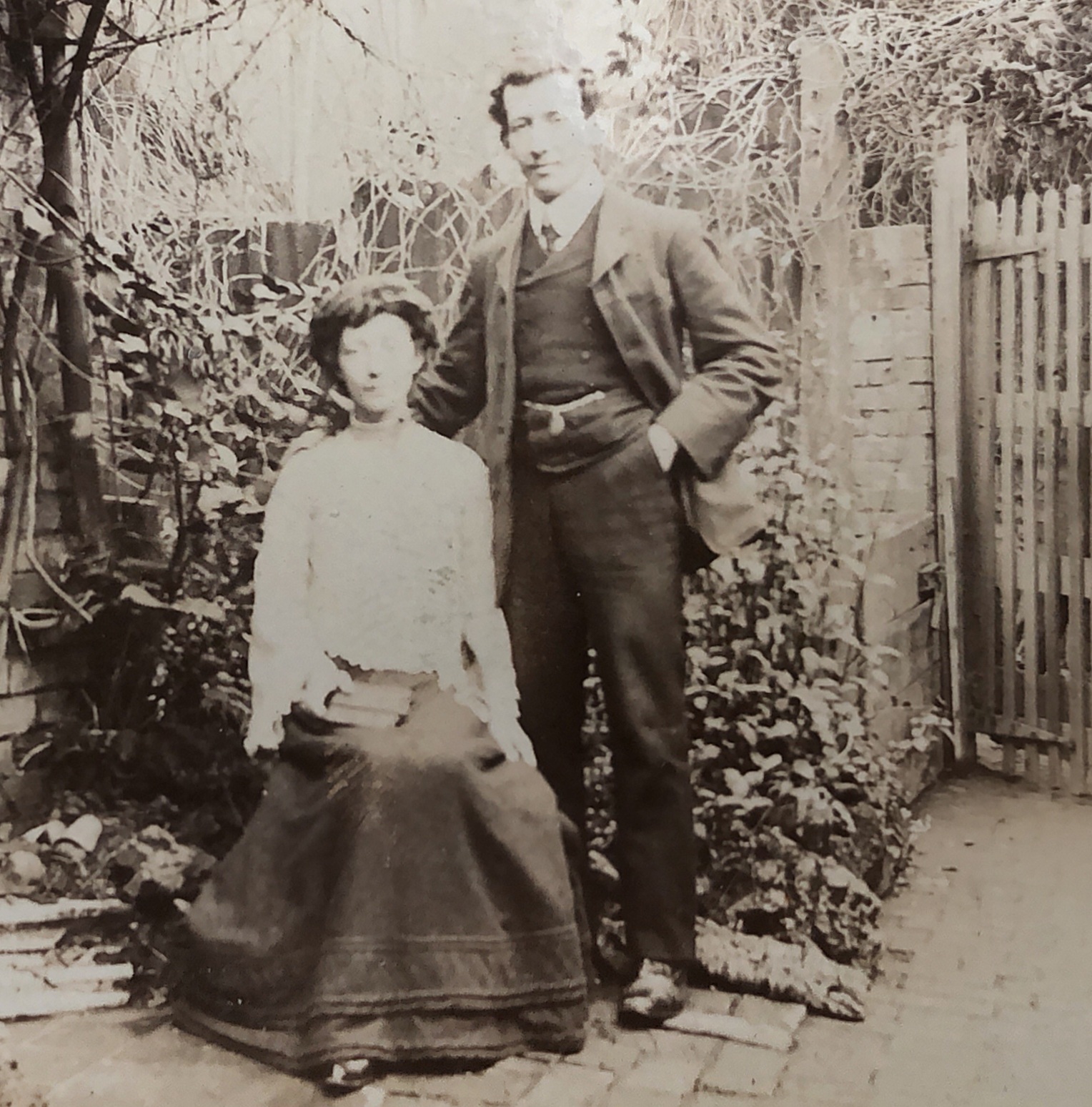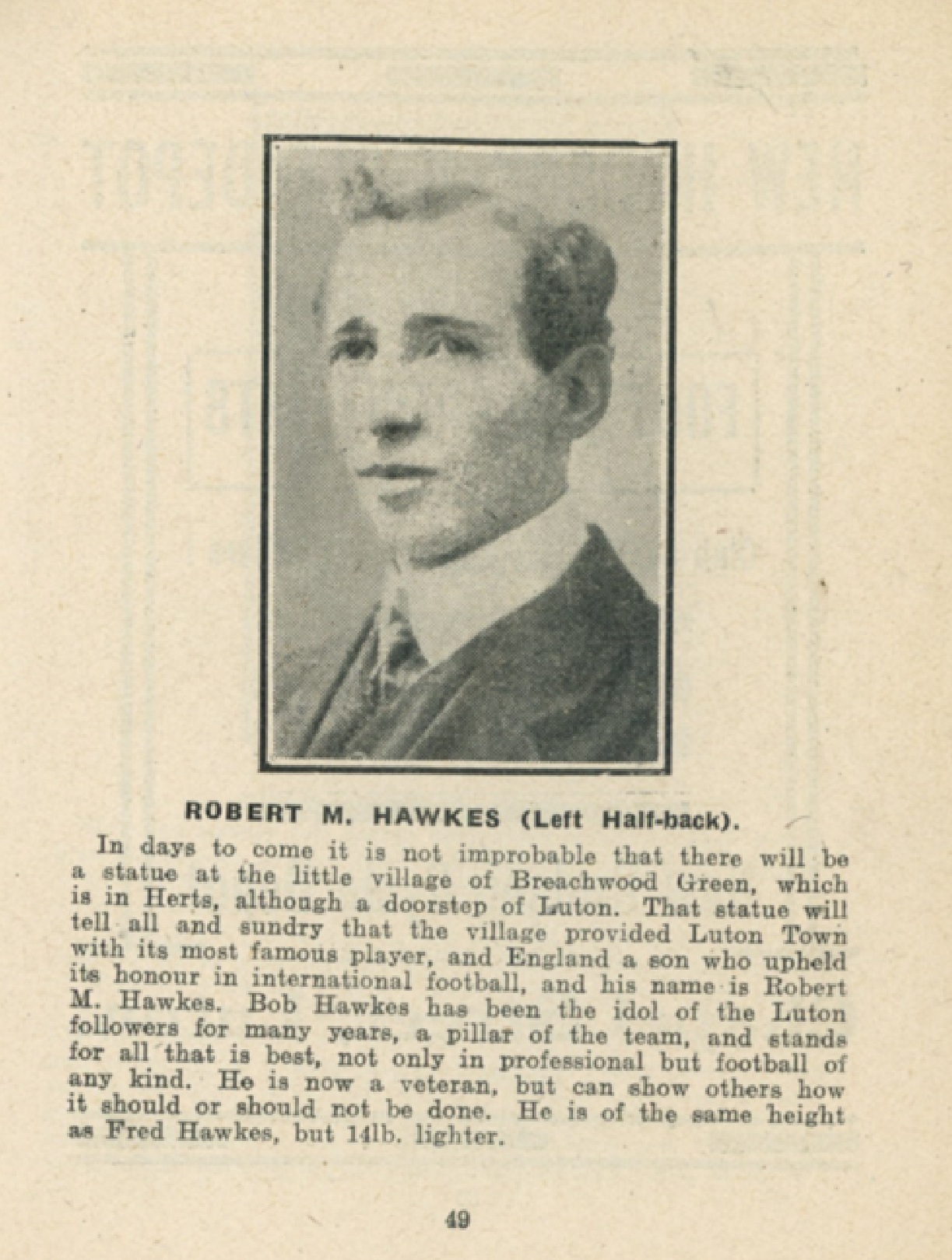bob hawkes - luton's first superstar

The performances of Ross Barkley in the number 6 shirt two seasons ago, coming as the club’s time at Kenilworth Road winds down, were something few of us will ever forget. They also bookended another graceful midfielder who claimed the same position in the line up. His name was Robert Murray Hawkes, and he was Luton’s first superstar.
Robert, or Bob as he tended to be called, was born in the hamlet of Beachwood Green on the 18th of October 1880. He had moved to Luton by the age of 10 and left school at 13 to become an apprentice hat maker. At the same time he was making a name for himself on the football pitch, turning out for a number of famous local sides before joining Luton’s reserve team.
He made 12 first team appearances in the 1901/02 season and did enough for the directors to invite him to join as a professional. He turned down the opportunity in favour of remaining as an amateur, instead offering to lend his assistance whenever possible. This arrangement would continue until for a decade as Bob combined his playing career with his business interests. He rarely played in midweek matches for that reason.
His primary position was at left half, the best modern comparison to the position being the left side of a three man midfield. The other members of the trio, Fred Hawkes and Dunstable’s Fred White, soon formed what was considered the ‘best half-back line in the Southern League’ and naturally this started to draw attention from Football League clubs. Bob was never interested and offered this rebuttal when Aston Villa invited him for a trial.
“Luton is good enough for me, if they would let me play for them. And to that resolution I intend to stick.”
A speedy and clever player known to wander around the pitch, he didn’t look much like a footballer. Slender in build and with a shock of auburn hair, he was a gentle-looking and humble man, one who drew praise even from his regular opponents. Of him Northampton outside right Fred Walden said,
“I was lucky to make my debut against Bob, a player with a great reputation for clean tackling and who liked to play his football on the ground. I played against him many times and I never knew him to try an unfair trick on me or anybody else.”
Indeed such was Bob’s dislike for heading the ball and using his feet instead it was eventually rumoured he had a gold plate in his head to protect a previously fractured skull! Fake news, 1900s style.
Remarkably an international call-up was to follow, with Bob making his debut against Ireland in September 1907 and becoming Town’s (and incidentally, Hertfordshire’s) first England international. He would win five caps in all. His amateur status also allowed for selection in the 1908 Great Britain Olympic squad where he would win a gold medal, including scoring twice in the 12-2 Quarter-Final win against Sweden. This was part of 22 amateur England caps.
His standing at the club was clearly that of a star asset. When he married Rose in 1909 the club directors asked if they could buy the couple a gift, a gesture they’d never made before. Bob requested a piano and offered his thanks for the ‘beautiful present.’ When he finally turned professional at the end of the 1911-12 season he became the club’s highest paid player.
Below: Bob and wife Rose (piano not pictured unfortunately!)

Bob made 31 appearances in the final year before the Great War but struggled to stay healthy, though his volunteer training gave him a new lease of life and he played regularly in wartime regional leagues. In October 1919 he was awarded a benefit against Watford which raised £160.
Aged 39 when organised football returned Bob had decided to retire and concentrate on his hat-making business. Kenilworth Road would get to see him one final time however as, on the 26th April 1920, he was asked to fill in for the home match with Bristol Rovers, which ended 1-1. He would continue to live in Luton after hanging up his boots for good with bowls becoming his new passion, playing for the Wardown club.
In 1937 was one of the honoured guests at the George Hotel as Luton celebrated a first Football League promotion. He was sat with Fred Hawkes and Fred White, the famed half back line reunited. When he passed away in 1945 the club, and the town, lost one of its most loyal servants.
We’re proud at Hatters’ Heritage to be custodians of a number of artifacts from Bob’s career including his first England cap, which can be seen on tours of Kenilworth Road, and a scroll presented at the 1908 Olympic Final. He deserves to be remembered by all Luton supporters.
Below: Bob's final Luton News Handbook Entry, 1920/1921 and 1906 Cigarette Card.


